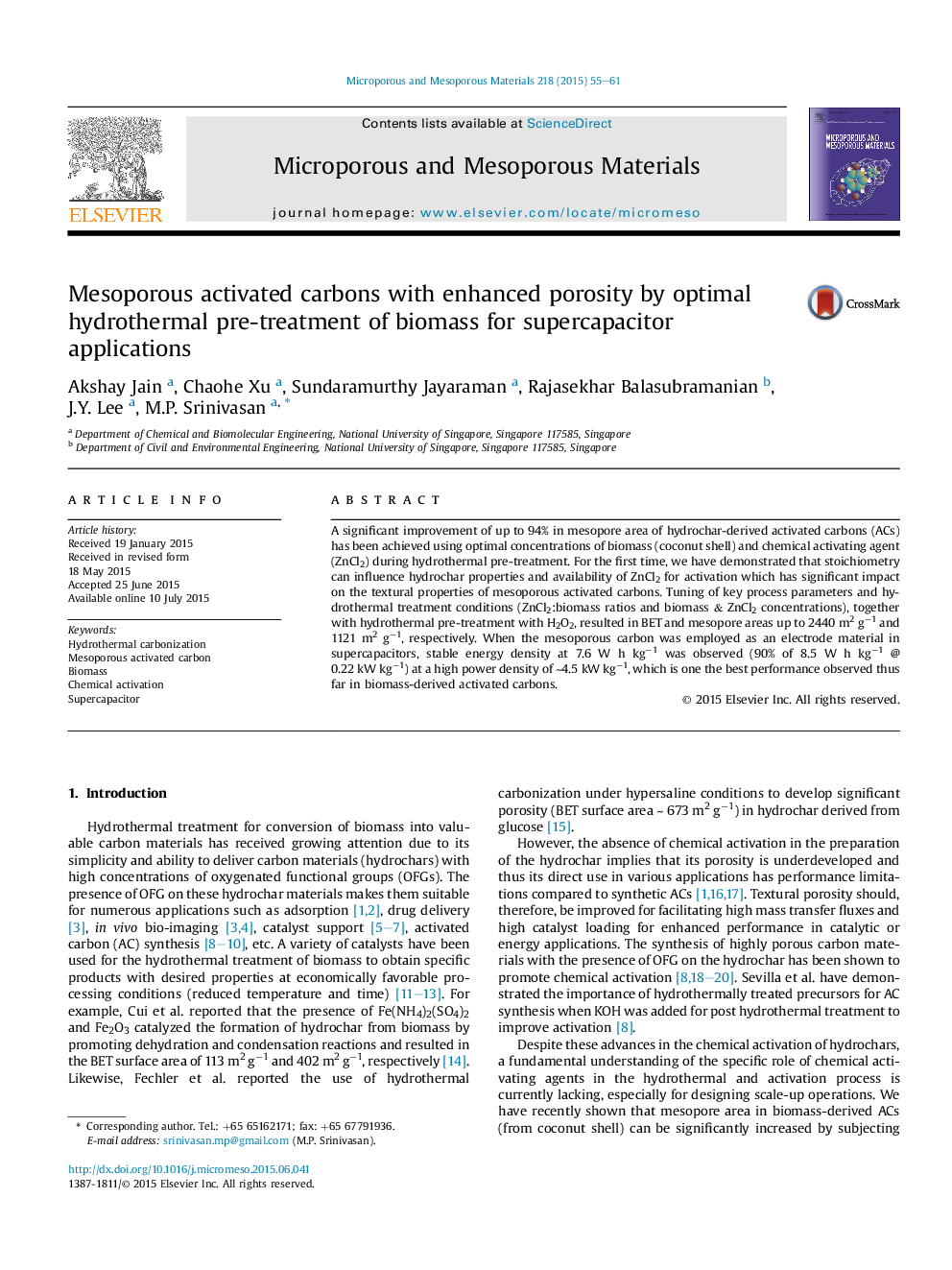| Article ID | Journal | Published Year | Pages | File Type |
|---|---|---|---|---|
| 72427 | Microporous and Mesoporous Materials | 2015 | 7 Pages |
•High mesopore area obtained by improved chemical activation (CA) with ZnCl2.•Improved CA by tuning the stoichiometry during hydrothermal carbonization (HTC).•94% increase in mesopore area by optimizing the stoichiometry.•HTC of biomass with H2O2 further enhanced the mesopore area by 43%.•Stable energy density of 7.6 W h kg−1 is achieved at high power density of 4.5 kW kg−1.
A significant improvement of up to 94% in mesopore area of hydrochar-derived activated carbons (ACs) has been achieved using optimal concentrations of biomass (coconut shell) and chemical activating agent (ZnCl2) during hydrothermal pre-treatment. For the first time, we have demonstrated that stoichiometry can influence hydrochar properties and availability of ZnCl2 for activation which has significant impact on the textural properties of mesoporous activated carbons. Tuning of key process parameters and hydrothermal treatment conditions (ZnCl2:biomass ratios and biomass & ZnCl2 concentrations), together with hydrothermal pre-treatment with H2O2, resulted in BET and mesopore areas up to 2440 m2 g−1 and 1121 m2 g−1, respectively. When the mesoporous carbon was employed as an electrode material in supercapacitors, stable energy density at 7.6 W h kg−1 was observed (90% of 8.5 W h kg−1 @ 0.22 kW kg−1) at a high power density of ∼4.5 kW kg−1, which is one the best performance observed thus far in biomass-derived activated carbons.
Graphical abstractFigure optionsDownload full-size imageDownload as PowerPoint slide
